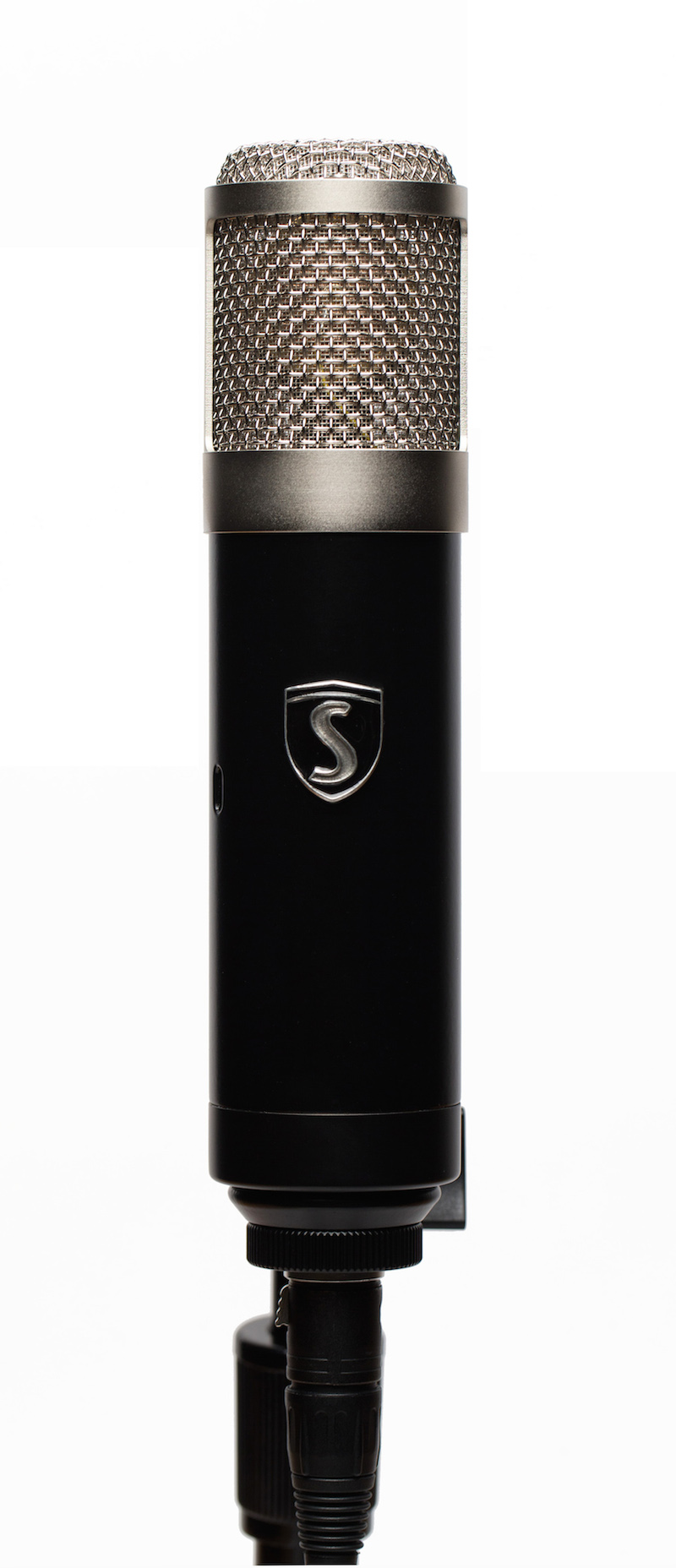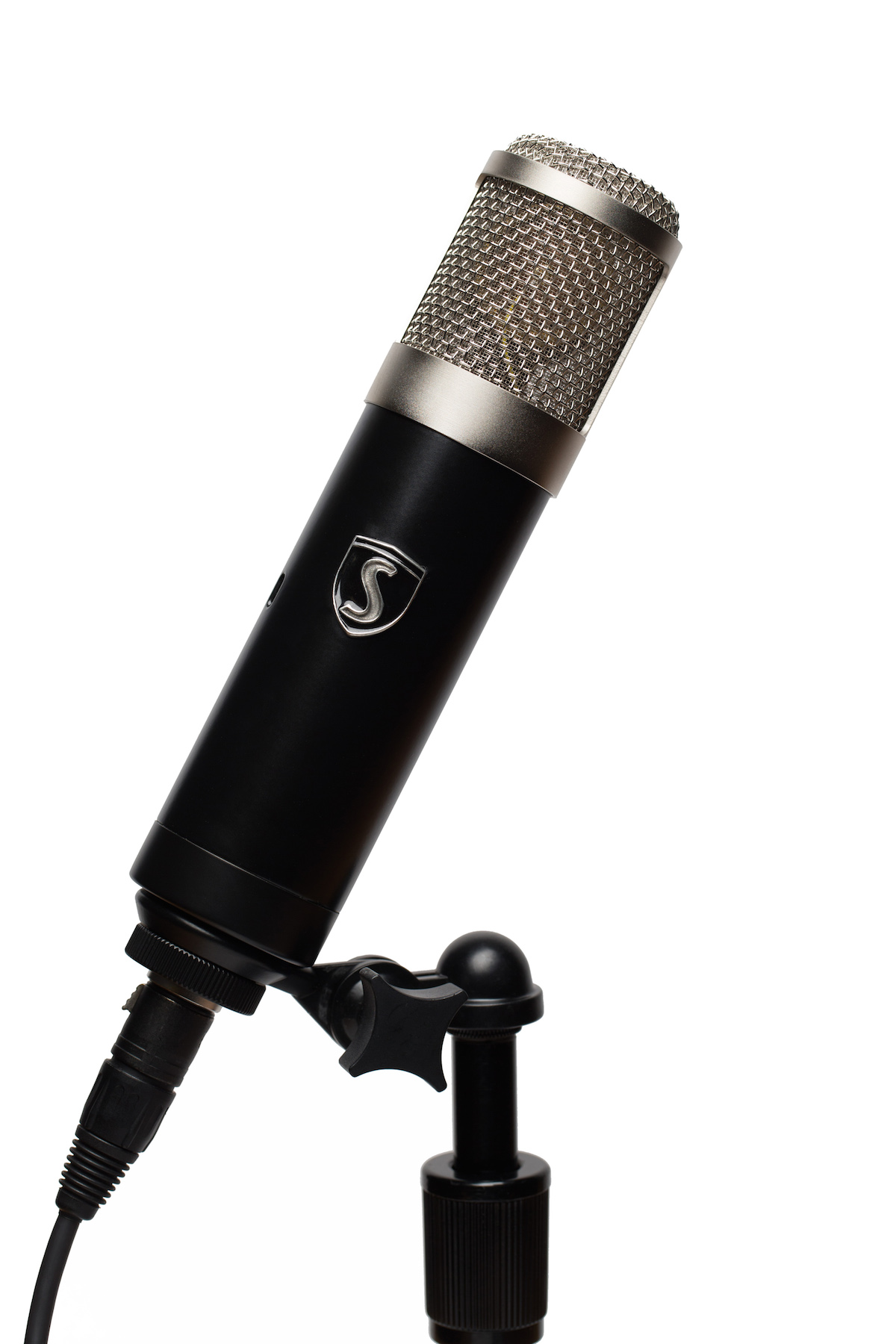New Gear Review: Soundelux USA U99 Large Diaphragm Tube Condenser Microphone

Designer David Bock has a rich history of producing top-quality condenser mics, and his most recent offering, the Soundelux USA U99, is no exception.
Soundelux is a name most audio professionals have been familiar with for quite some time. Engineer David Bock has been developing his brand of “new vintage microphones” since the 1990s. His designs, which include the Soundelux 251, E47, and E49, can be found in many of the world’s high end recording facilities.
David went on to launch Bock Audio in 2007, and has continued to add beautifully designed microphones to his product line. All Bock microphones use meticulously hand-tensioned brass capsules with robust diaphragms that deliver transparency without artificial brightness.
The Soundelux USA U99 is David’s newest design, and it continues to highlight his meticulous attention to detail in creating high end, professional level microphones. With a list price of $2,599, the U99 is a powerful and feature-packed tube mic that can find a unique place in even the most diverse mic collections.
Features
The U99 is a multi-pattern tube microphone that was designed to capture the versatility and feel of a vintage Nuemman U67, but without its price tag.
It features a K67 dual-backplate, dual-membrane capsule, along with the signature “Fat” switch found on the Soundelux U195 microphone. Like all Soundelux USA microphones, the U99 uses “new old stock” tubes and a linear current power supply to maintain a full sound. For those of us who like switches on our microphones, the U99 offers plenty of choices that can widely shape how you use the U99 in any given application.
The U99’s “Fat” switch changes the bias timing of the tube from a traditional 50s style lean to a modern super size. Bias timing exists in all self-biased tube schemes and this inherently will add dynamic or harmonic distortion into the signal. This switch imposes a distinct difference in the sound characteristics on the U99, especially when used on louder sources like a drum kit or bass amp.
The U99 also features a 3-way high frequency switch that toggles between “Cut,” “Flat,” and “Boost”. “Cut” adds a gentle shelf that starts at 5kHz, with a 1dB cut at 10kHz. This is intended to make the microphone more flat in the higher frequencies. “Flat” keeps the amp flat, which means the natural 10kHz boost comes through. “Boost” is also a gentle shelf which starts at 5kHz and adds a 1dB boost at 10kHz.
Additionally, there is a “Hi/Lo” switch, which shifts the shelving point from 5kHz down to 2.5kHz. There is a -20dB pad on the mic for use on louder sources, and the power supply has a sweepable polar pattern selector that ranges from Omni to Cardioid to Figure 8, with many stops in between.
One small but not insignificant point of concern is that although the U99 itself is stored in a nice, cushioned wooden box, the rest of the components and power supply are stored in a foam-lined cardboard box, and I was suspicious as to whether it would hold up over the long term.
Considering the U99’s price tag, and the usual hard cases included with many other tube mics and their components (see my Luke Audio Y56 review), the cardboard box for the additional components feels a bit like an after-thought. Though the mic itself can always live inside the sturdy wooden box, keeping all components of your investment safe and protected when not in use is always important to me.
In Use
In my tests of the U99, I experienced an interesting pattern: Usually, the mic would either perform exceptionally well, or not well at all for my tastes, depending on the source I paired it with. (Of course, it’s worth noting that we all hear things a bit differently, and what one engineer loves, another may dislike.)
While the U99 is aimed at capturing the overall feel of the classic mid-heavy U67 microphone, I found the U99 a bit more brooding and dark. In many tests when the high frequencies were cut, the mic had a tendency to get overbearingly dark. On other tests, the U99 sounded astonishingly good.
Even more surprising was that in certain instances, the U99 didn’t sound the way I was expecting by itself, but when combined with other microphones, it added a beautiful element to the overall mix. Most of the instances where the mic excelled were because of the brooding characteristics of the U99, and knowing what the mic is going to give you with each source you are using it on.

Like all Soundelux USA microphones, the U99’s “Fat” switch imparts a unique warmth and richness to its tone via an alteration in the tube bias timing.
In isolation, the U99 could be a bit hit-or-miss for me; it felt muddy in the mix when used on both female and male vocalists. My ears generally like a bit of sparkle on the top end of a vocal, so when compared to a brighter style of much, whether it be a U47, a Blue Bottle, or a Sony C800, the U99 lacked some presence.
Using the built-in high boost helped, but it didn’t change the full and pronounced body in the low-mids. Of course, every singer and every song is different, and what works for one might not for the next. But in general I wouldn’t reach for it first for a lead vocal performance in a modern, dense mix.
With that said, when used for a voiceover, the U99 was exceptional. The controlled proximity effect on the U99 was full and rich, and delivered a deep sound that really brought out the intimacy of the spoken words.
When I placed the U99 around the body of my already dark and broody-sounding Steinway grand piano, those characteristics became even more evident, and using the Fat switch added even a bit more body to the sound.
The feel of the U99 by itself on the piano would likely be better suited for a cinematic or classical recording, rather than a conventional pop or jazz recording. But what surprised me most when using the U99 on piano was how well it blended with a few other microphones. When I combined it with the Earthworks PM40 piano bar, the piano sounded as lush and rich as I had ever heard it. The Earthworks gave me the bright clarity and stereo imagery while the U99 filled in the lows and mids with a warm quality that was simply beautiful to hear.
Using the U99 with drums, I had to place it fairly high to avoid having an over-abundance of kick drum in the signal—even when placed quite a few feet away from the kit. Once a sweet spot was found, the U99 provided a great, punchy and tube-like drum sound that you’d expect from a U67.
On a bass cabinet, the dark qualities were perfect for capturing a deep and boomy bass texture—think more R&B and less alternative rock. And, though a tube mic isn’t always my first choice for violin, I grabbed the U99 and was impressed at how warmly and accurately it captured the signal. Overly-bright violin can get a bit hard on the ears, and I think the overall frequency response of the U99 played well to the sound qualities of the instrument.
To Be Critical
The biggest issue I had with the U99 was that when it paired well with a sound source, it was glorious, but when it didn’t pair well, it really didn’t pair well. Sometimes, I have found that if I try a mic on a sound source, even if I don’t like it, I can envision a possible future use for the pairing on another project. But this wasn’t always the case for me with the U99.
On the flip side, when the U99 excelled, I was blown away by just how great it did sound. The U99 on voiceover work was excellent, and would be one of my first choices for this kind of application. It would be among a select few for piano and stringed instruments as well.
All microphones inevitably have applications that we prefer over others, but the U99 had a more polarized feeling for me. When we’re looking at a price point over $2,000, I believe it’s important that a buyer knows what they are getting from the mic and how it will fit in with their current collection.
If you’re looking for a single high-end workhorse for all your condenser mic needs, this might not fit the bill. But it you already have a decent locker going and want to add on a significantly different and memorably full-bodied tone, the U99 is a more than worthy option for that role.
Summing it Up
It’s known that tube mics are an important and necessary flavor for any well-rounded microphone collection. The U99’s unique, dark richness proved to be an invaluable quality when combined with other mics. While it didn’t always give me what I was expecting, I was deeply rewarded by the mic when I found the right uses for it. Because of its hit-or-miss nature, and because I found that it often worked best a complement to other mics, I wouldn’t recommend the U99 to someone in the early stages of building their collection.
However, for those with an already established mic collection, the U99 will only enrich your choices. The meticulous and robust build quality is evident the second you put your hands on the mic, and that translates through to the sounds that you capture with it. While there are similarities to the classic U67, I don’t believe anyone would mistake the U99 for a U67—however, make no mistake that the Soundelux USA U99 can certainly deliver the goods.
Please note: When you buy products through links on this page, we may earn an affiliate commission.






